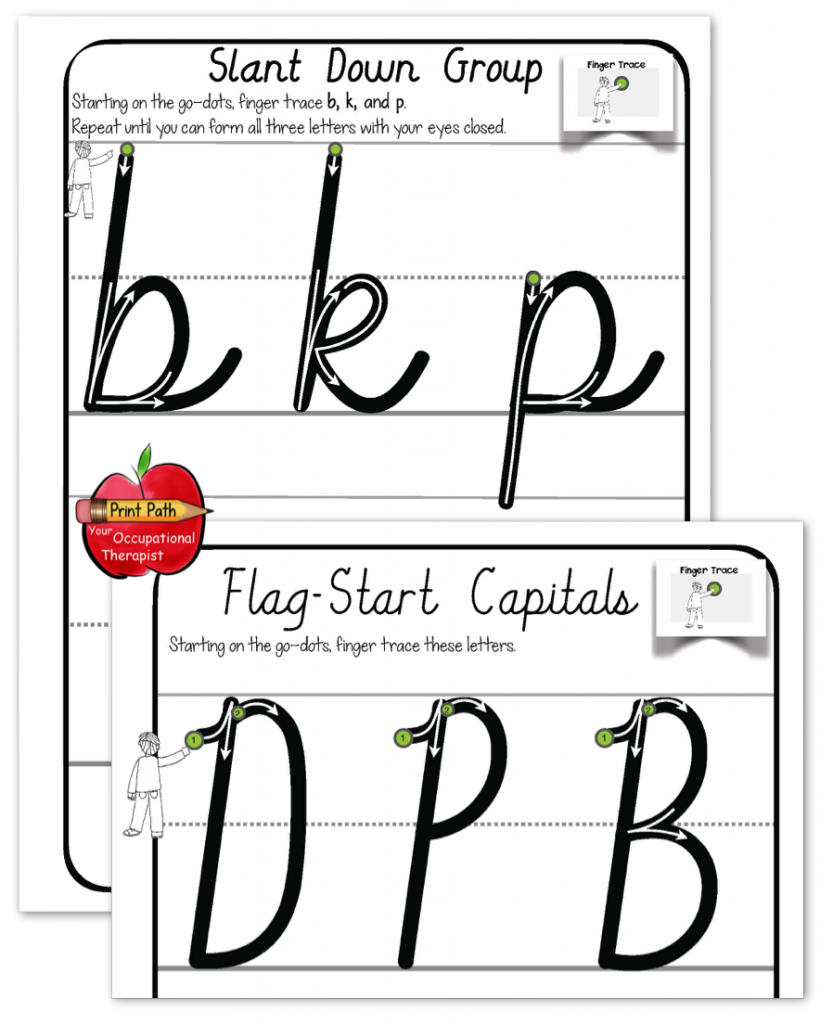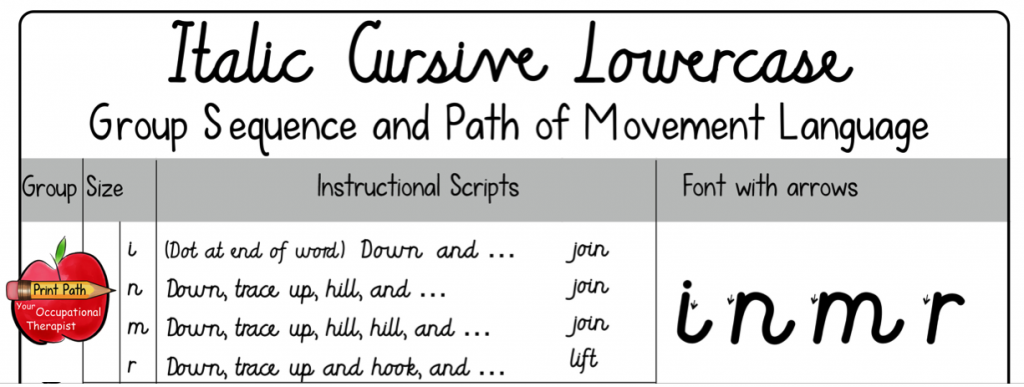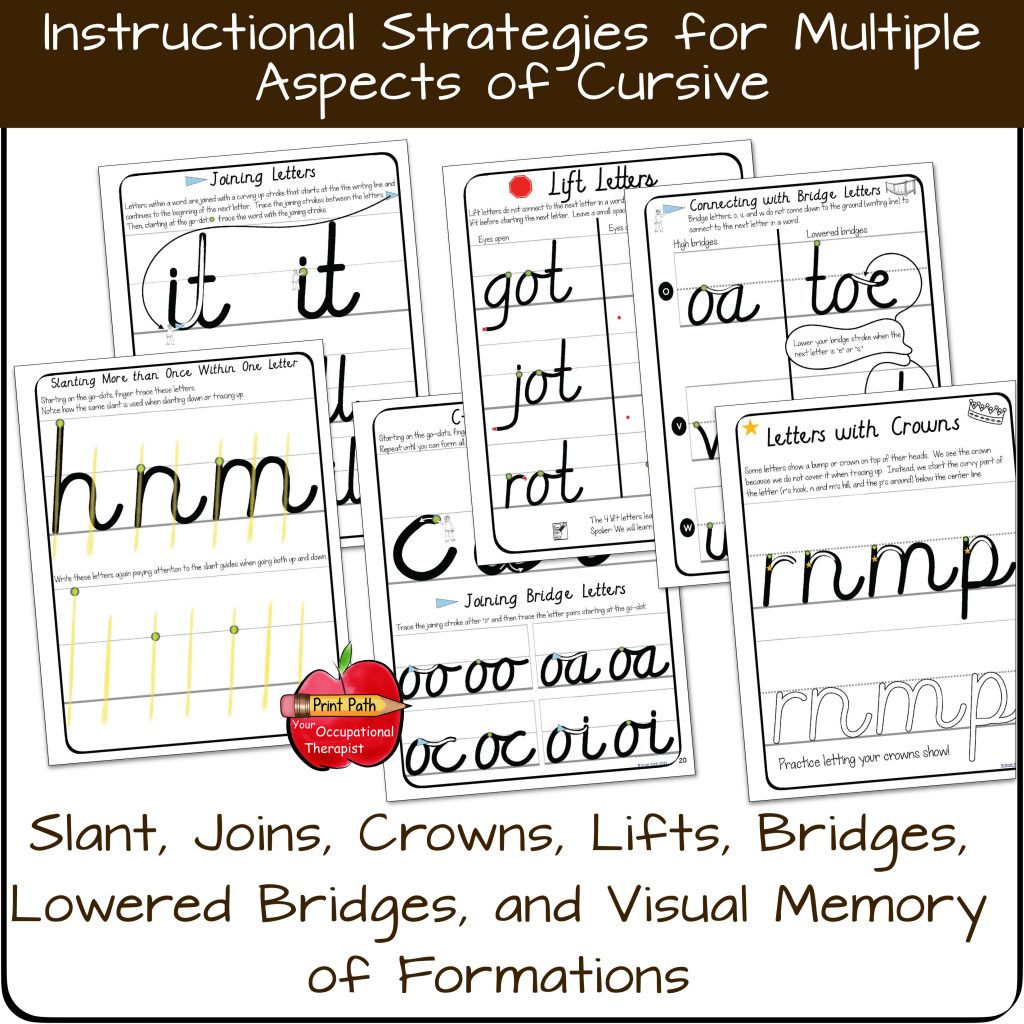If you are a parent, home-school parent, or teacher looking for a cursive program, you will find many cursive curricula to choose from. Most are less than stellar, and it can be difficult or expensive to find an effective program. I can help show you what to look for and what to avoid.
Teaching cursive seems easy, right? It’s just the ABCs! Perhaps you were taught printing or cursive using these methods: ABC order, Capital & lowercase letters, Dash-line tracing sheets. (See below.) Beware, high quality effective instruction is not that simple!
Don’t Use These

1. Here’s the problem. Once a child has written a letter formation a few times in a row, the quality of the next formations deteriorate – even a half page of practicing a single letter and connecting that letter is too much repetition.
2. Another problem is that once the student finishes A, they tackle B. B has no relationship to A. Knowing how to write A does not help them write B, since the letters are formed differently.
3. You should never ask a child to write letters they have not learned. Assuming the above sample is the second page in the curriculum, there are 15 letters that have not yet been taught.

4. It is perceptually more difficult for children to trace on dashed lines than on solid lines. When first learning cursive, children often have difficulty knowing how to create formations, i.e., which way to go when making loops and at intersections. These directional changes are more confusing on dashed lines.
5. It is best to teach individual letters that start from a consistent spot or space on the writing paper. I prefer methods where letters start at the top as they do when printing. When cursive letters start at the top you are reinforcing printing skills rather than confusing students.
Seven Essential Elements of an Effective Cursive Curriculum:

- Similarly formed letters should be taught in groups so that children use skills they already have to learn new letters.

2. Capitals and lowercase should be taught separately as their formations are different.

3. You as the instructor should be given a scripted path of movement to use to demonstrate each formation.

4. An effective curriculum will have a method of asking kids to recall formations they’ve learned without looking at the cursive letter. Kids need to be challenged to recall formations in order to form strong visual and motor memories.

5. To be effective, cursive instruction must incorporate the explicit teaching of formations, slant, letter joins, crowns, bridges, lowered bridges, and the visual memory of each formation. Additionally, students should know what each of these components are so that they understand the learning goals of the curriculum. That way, children will understand clearly when they are successful and when they need to continue practicing.

6. The best curriculum incorporates several multisensory methods for students to learn formations and how to join letters.

7. There should be an emphasis on connecting high frequency letter combinations rather than connecting the same letter over and over.

8. Pages should be fun and engaging to help students maintain interest in learning cursive.

Effective and Reasonably Priced
Looking to teach your child or students Cursive? Here is an affordable resource that teaches you how to teach cursive and provides students with step-by-step worksheets they will enjoy.
Check out this blog posts to find out more about:
The Advantages of teaching Italic Cursive
Multisensory Activities to Teach Printing and Cursive

